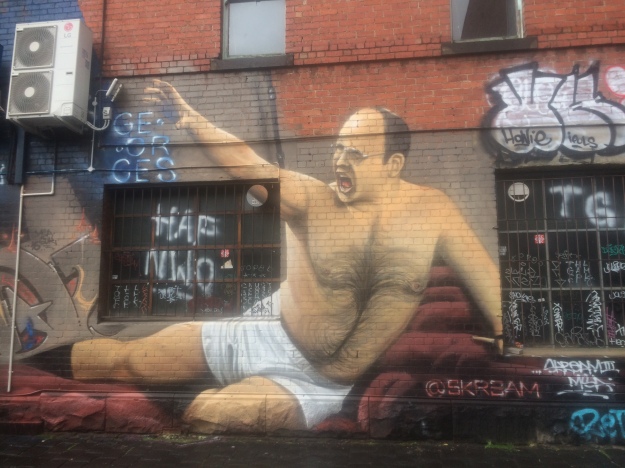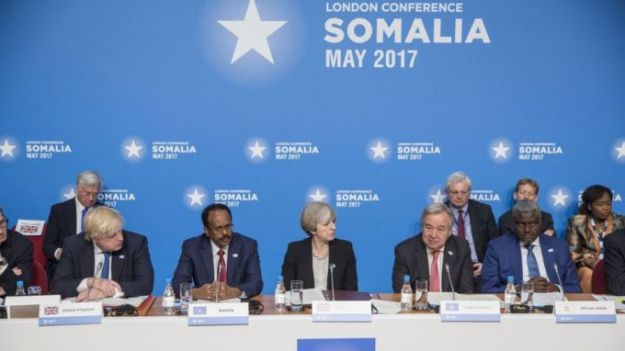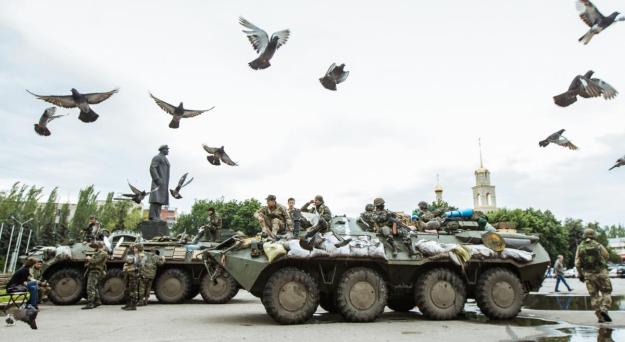The release of the Panama Papers by the International Consortium of Investigative Journalists (ICIJ) has fuelled spectacular revelations regarding the scale of grand corruption and the wider system which enables it (ICIJ, 2016: np). The scandal is exposing involvement by the very people and institutions who should feel morally and legally compelled to act with the highest integrity but who instead participate in a system all too frequently perpetrating wholesale crime, undue privilege, and the global erosion of security. (Wolf, 2014: 3). They are doing so with impunity, and they are doing so while the world’s watchdogs cannot help but possess full knowledge that ‘the link between grand corruption and mass human rights violations is undeniable’ (Freedom House, 2014, and also Woodrow Wilson Center, 2016: np., and Transparency International: 2008, ).
No less than heads of states and global financial institutions linked to London, New York and Switzerland have now been connected to an enormous shadow economy responsible for: hiding assets; exercising bribery; facilitating tax evasion; practicing financial fraud; enabling drug trafficking; and participating in sexploitation. (See ICIJ, 2016 and Huffington Post a, 2016, Huffington Post b, 2016: np, and BBCb, 2016: np ). And no fewer than 11 million documents have laid bare the global elite’s participation in a system purposefully rigged to increase the gap between the absurdly wealthy and the tragically poor. The international community would do well to note too that this is a system which facilitates crime in desperate and conflict-vulnerable settings while arming the insurgents and terrorists who operate from within such settings (Patrick, 2009 and Napoleoni, 2003). We should also recall the system intentionally erodes democratic principles of transparency, fair taxation, the right to peaceful protest, and the exercise of free speech (Woodrow Wilson Center, 2016: np and Wolf, 2014: 5-8). In short, this is a system wherein leaders and criminals alike actively undermines everything to which the international community aspires, and for which it ultimately endeavours; sometimes selflessly and in conditions of great hardship.
It should not go unrecognised that the responses of those who have been unveiled as both witting and unwitting participants in the darker aspects of this economy, all too consistently reiterate a mantra which should give each of us a moment’s pause for reflection – that lawyers and financial experts alike still possess the legal means of perpetrating unfair, corrupt, and increasingly unfair and corrupting practices. Vested interests in lofty positions have suggested big businesses, and their high-flying personnel, need to work in the shadow economy even when it lowers opportunities for smaller businesses and honest entrepreneurs. They argue further that legislation against bribery ‘puts British companies at a competitive disadvantage’ (Barrington, 2016: 4). And yet still too, others have intoned that society needs to tacitly accommodate unethical practices in the financial sector on the grounds that businesses in their countries are too big to fail, or too important to risk having relocate to another country. But in making these accommodations we will be enabling the capture of entire governments by organisations whose interests do not include the common citizens who eke by and sustain the infrastructure enjoyed by those who have rigged the system against them (Johnson, 2009: np). Such accommodation could only serve to entrench profit for the few at the cost of the many. We are, in effect, now experiencing parallel attacks on democracy by the licit and illicit economies alike – both of whom are seemingly melding into a deeper, more committed relationship in an increasingly shady capacity and whose political-economy will forever thwart the international community’s efforts in bringing peace and security.
Those who evade tax legally are allowed to escape criminality by conveniently structured legal technicalities. This phenomena is relatively easy to rectify. But the Big King Kleptocrats who knowingly act outside the law, do so understanding that successful prosecution against their acts is nearly unheard of. History and statistics remain firmly on their side. This is occurring regardless of corruption’s increasingly evident role in destabilising entire continents such as Africa, the Middle East, Asia, and Central and South America (Carnegie, 2015). These actors smile comfortably while insinuating that exposure of their misdeeds might expose a larger, darker reality in which too many purportedly clean-skinned actors may also be complicit.
And while they may not be kind, they most certainly are proving wise.
Indeed, these same kleptocrats, and their advisors, will have followed closely the freedom and riches once more enjoyed by Egypt’s Hosni Mubarak who has now escaped charges of corruption and murder on a mere technicality (Reuters, 2015: np). Mubarak was a kleptocratic despot whose legacy includes death, blood, fear, and a deeply troubled country. He did not operate in a vacuum, and he was aided by the most powerful regimes in the world. But that does not excuse the outcome – nor does it justify the continuance of such behaviour. Those choosing to play in the dirty sandbox of blood and money in today’s shadow economy will have either dismissed the importance of the Arab Spring’s impact on security and human rights or cynically regarded the situation as yet another opportunity from which to leverage additional millions. I argue that humanity can no longer afford such cynicism.
I further assert these same actors will have understood President Goodluck Jonathan’s dismissal of his bank governor following the well-intended public servant’s disclosure to the ‘Nigerian Senate that the treasury was missing billions of dollars in expected oil revenue’ (Wolf, 2014: 5). Indeed, Jonathan and his cronies seemed content to turn a blind eye to the networks which channelled money and arms to Boko Haram while leaving security forces ill equipped to quell an uprising which has now left more than 10,000 civilians and security personnel dead at the hands of Islamist savagery (Foreign Policy, 2015: np).
The kleptocrats will have further monitored the toppling of corrupt regimes in Tunisia and the Ukraine and reacted like narcissistic sociopaths unable to emotionally register the gravity of their actions, while concurrently making plans to fly to safety while maintaining access to their ill-gotten gains if the same danger knocks on their door.
The impunity enjoyed by this cohort, and structured into our globalised economy, has paved the way for much of the harm we see unfolding on the world’s stage. It has also provided resonant and compelling reasons from which the so called Islamic State, Boko Haram, and the Taliban find a seemingly endless supply of recruits (Chayes, 2007: 22, and Woodrow Wilson Center, 2016: np, and Schirch as cited in Mertus and Helsing, 2009: 68).
Whether knowingly or not, every last player in the shadow economy has contributed to an encroaching threat against humanity and which serves as nothing short of a security threat multiplier. It is of epic and global proportions.
The 2014 Ebola crisis in West Africa provides an immediate example of how easily corruption might impact security on a global scale. UN donor contributions topping $5.2bn were dispersed to Sierra Leone, Liberia and Guinea. Almost all of it vanished, and only a fraction of the disbursement was ever audited. ‘In all three countries, no individual has been tried, much less convicted, for their role in the mismanagement of money meant to save the lives of the dying’ (Al Jazeera, 2016: np.). These funds were also intended to contain the outbreak and prevent its spread. The UN’s Global Ebola Response data refers to the outbreak’s nature as having been of ‘widespread and intense transmission’ (UN, 2014: np). But to date, the myriad pages and resources on their website speak only of a level of need and the current status of the situation. Their silence of the flagrant misappropriation of funds perpetuates impunity. And such complicit behaviour could very well facilitate a new pandemic of Ebola or some other virus, which experts warn could be incredibly difficult, if not impossible, to halt if not contained early, and with the utmost care; care which could never result in the face of another round of missing but badly needs funds (Oxford Martin School, 2012: np).
Grand Corruption further impacts security by destabilising regions in concussive shock waves. As migrants flee corrupt regimes and insurgencies (again, simultaneously fostered by the shadow economy), we see communities decimated, resentments grow, borders close, and trust diminish. (BBCa 2015: np,). Actions originating thousands of miles away from Europe’s shores are now threatening the cohesiveness of European states and the long architected interdependence of the EU. The Schengen Agreement is further threatened as once ceded sovereignty is being repossessed by politicians seeking to erect borders and control the influx of desperate people fleeing the regimes which grand corruption has enabled.
Finally, kleptocracy feeds the thickening of the crime-conflict nexus as human traffickers, arms dealers, and smugglers share mutually beneficial relationships with terrorists, insurgents and the ruling elite. The nexus will continue to thicken so long as the chaotic conditions and lack of governance resulting from unabated kleptocracy ensures the conditions favourable to its growth. (see Patrick, 2009, and Lacher, 2012, and McMullin, 2009, and Jesperson, 2015 and Sloan and Cockayne, 2011).
And it is for these reasons, and so many more, that we must strive to end impunity for grand corruption – and the shadow economy in which it thrives. Such a task will require concerted, relentless multilateral efforts and incredible political will. But it can, and must be done.
We can begin by seizing opportunity from the momentum gathering in the wake of the Panama Papers and the associated Unaoil scandals in current headlines. We can further reach out across the international community and form inter-organisational working teams to apply pressure on host-countries, the Bretton Woods institutions, and home governments. We can institute training programs which dispel the activities which remain shrouded in mystery but whose reality can be unpacked in simple terms. But most of all, we must challenge the sovereignty of those countries who refuse to participate in fair trade and good governance – and we must have an international court with both the will and capacity to challenge the problem. And that court must somehow operate separately from the arbitrary and political interests of the United Nations Permanent 5.
But it has to start. Impunity has to end. And accountability must follow. And never has there been a more pressing time.
Post-script
As a post-script to my previous position piece, I would like to gently assert that the International Community has understandably tolerated grand corruption in the theatres of peacekeeping and peacebuilding operations. The conditions in many of these theatres have necessitated that our precious resources be used first to protect lives and second to institute the ground-level security needed to maintain sufficient equilibrium from which to begin the long, hard institutionalisation of security sector reform, transitional justice, and micro-development projects. But this too provides another reason why the solution to grand corruption requires an international effort outside the influence of the P5 (whose own members might be guilty of grand corruption or geopolitics). We must seek a solution which can pre-empt the looting of banks and act independently of outside political agendas which might situate a vulnerable country between winning and losing scenarios as powerful countries battle for control by proxy. We need a solution which sends a clear signal to corrupt elites across the entire world, and not simply those situated in areas of conflict, that corruption will no longer be tolerated, nor paid for by blood of innocent people. But we, the donor countries, must see to our own houses first. We must ensure our hands are clean and that any authority we exercise is comprised of substance and never hollow in its nature. We must lead from the front, and from genuine experience. But we simply cannot afford to turn away from this issue – at home or abroad. People are dying by guns and by starvation; and they are dying by torture when taking action to stop the atrocity at hand while having inadequate support behind and beside them. We must be that support.
References
Al Jazeera Media (2016) The plunder of west Africa Ebola funds. Available at: http://www.aljazeera.com/indepth/opinion/2016/01/plunder-west-africa-ebola-funds-160125140155872.html (Accessed: 6 April 2016).
BBC (2016) Migration and citizenship, start the week – BBC radio 4. Available at: http://www.bbc.co.uk/programmes/b06ybg7h (Accessed: 3 April 2016).
BBC (2016) Panama papers: What the documents reveal. Available at: http://www.bbc.com/news/world-35956055 (Accessed: 6 April 2016).
Barrington, R. (2016) ‘Spot the Difference: Corruption Research, Academies and NGOs’, British Academy: British Academy. pp. 1–7.
Carnegie Endowment for International Peace (2014) Corruption: The Unrecognized Threat to International Security. Available at: http://carnegieendowment.org/files/corruption_and_security.pdf (Accessed: 14 March 2015).
Chayes, S. (2007) ‘Days of Lies and Roses: Selling Out Afghanistan’, Boston Review, , pp. 21–23.
Foreign Policy (2015) In Nigeria, $2 Billion in Stolen Funds is Just a Drop in the Corruption Bucket. Available at: http://foreignpolicy.com/2015/11/18/in-nigeria-2-billion-in-stolen-funds-is-just-a-drop-in-the-corruption-bucket/ (Accessed: 20 November 2015).
Freedom House (2014) ‘Combating Impunity: Transnational Justice and Anti-Corruption’, Washington, DC: Freedom House. pp. 1–10.
Huffington Post (2016) Big Banks Aided Firm at Center of International Bribery Scandal. Available at: http://www.huffingtonpost.com/entry/unaoil-citibank-hsbc_us_56feba02e4b0daf53aefa1da (Accessed: 6 April 2016).
Huffington Post (2016) There’s A huge new corporate corruption scandal. Here’s why everyone should care. Available at: http://www.huffingtonpost.com/entry/unaoil-bribery-scandal-corruption_us_56fa2b06e4b014d3fe2408b9 (Accessed: 6 April 2016).
ICIJ (2016) Giant leak of offshore financial records exposes global array of crime and corruption. Available at: https://panamapapers.icij.org/20160403-panama-papers-global-overview.html (Accessed: 6 April 2016).
ICIJ (2016) The Panama papers. Available at: https://panamapapers.icij.org/ (Accessed: 6 April 2016).
Jesperson, S. (2015) ‘Development Engagement with Organized Crime: a Necessary Shift or Further Securitisation?’, Conflict, Security, & Development, 15(1), pp. 23–50.
Johnson, S. (2009) The Quiet Coup. Available at: http://www.theatlantic.com/magazine/archive/2009/05/the-quiet-coup/307364/ (Accessed: 6 April 2016).
Lacher, W. (2012) Organized Crime and Conflict in the Sahel-Sahara Region.
McMullin, J. (2009) ‘Organised Criminal Groups and Conflicts: The Nature and Consequences of Interdependence’, Civil Wars, 11(1), pp. 75–102.
Napoleoni, L. (2003) Modern Jihad: Tracing the Dollars Behind the Terror Networks. London: Pluto Press.
Oxfam International (2015) Richest 1% will own more than all the rest by 2016. Available at: https://www.oxfam.org/en/pressroom/pressreleases/2015-01-19/richest-1-will-own-more-all-rest-2016 (Accessed: 6 April 2016).
Oxford Martin School (2012) Pandemics – can we eliminate major worldwide epidemics? | videos. Available at: http://www.oxfordmartin.ox.ac.uk/videos/view/208 (Accessed: 4 April 2016).
Patrick, S. (2011) Weak Links: Fragile States, Global Threats, and International Security. Oxford: Oxford University Press.
Reuters (2015) Egypt’s high court overturns last conviction against Mubarak. Available at: http://www.reuters.com/article/us-egypt-mubarak-idUSKBN0KM0O620150113 (Accessed: 6 April 2016).
Schirch, L. (2006) Human Rights & Conflict: Exploring the Links between Rights, Law, and Peacebuilding. Edited by Julie A Mertus and Jeffrey W Helsing. Washington, DC: United States Institute of Peace.
Sloan, B. and Cockayne, J. (2011) ‘Terrorism, Crime, and Conflict: Exploiting the Differences Among Transnational Threats?’, Policy Brief, , pp. 1–11.
Transparency International (2008) ‘Human Rights and Corruption’, Working Paper, 05, pp. 1–6.
United Nations (2014) Global Ebola crisis response | data. Available at: http://www.un.org/ebolaresponse/data.shtml (Accessed: 6 April 2016).
Wolf, M.L. (2014) ‘The Case for an International Anti-Corruption Court’, Governance Studies at Brookings, July, pp. 1–15.
Woodrow Wilson Center (2016) Combatting grand corruption internationally. Available at: https://www.youtube.com/watch?v=GN6HDEgiSc8 (Accessed: 6 April 2016).















